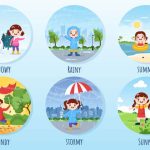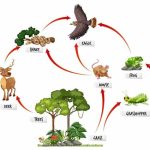Making Multiplication Fun and Simple
For many parents, introducing multiplication to their little ones can seem like a challenge. However, learning the table of 4 for kids doesn’t have to be complicated or dull. When taught in a playful, interactive way, children not only memorise faster but also develop a genuine interest in numbers.
At EuroKids, multiplication is not just about rote learning, it’s about helping children understand patterns, logic, and rhythm through engaging methods like rhymes, charts, and games. With the table of 4 in English, children grasp numerical relationships early, building a strong foundation for advanced math concepts.
In this blog, we’ll explore creative and age-appropriate ways to teach the multiplication table of 4, from catchy rhymes and interactive charts to exciting classroom activities.
Read More – Importance of Math in Everyday Life
Why Learning the Table of 4 is Important for Kids
Multiplication tables form the base for all mathematical learning that follows. Understanding the table of 4 allows children to:
- Recognise number patterns easily (4, 8, 12, 16, and so on).
- Perform quick calculations while adding or dividing.
- Gain confidence in solving math problems independently.
- Strengthen memory and logical reasoning skills.
The multiplication table of 4 also supports real-life applications, such as counting objects, understanding time, and grasping measurements. Teaching it early gives preschool and kindergarten students an edge in developing numerical fluency.
The Table of 4 Chart for Kids
Visual learning plays a vital role in helping children remember multiplication tables. A table of 4 chart can turn an abstract concept into something colourful and memorable.
Table of 4 in English:
| 4 × 1 | = | 4 |
| 4 × 2 | = | 8 |
| 4 × 3 | = | 12 |
| 4 × 4 | = | 16 |
| 4 × 5 | = | 20 |
| 4 × 6 | = | 24 |
| 4 × 7 | = | 28 |
| 4 × 8 | = | 32 |
| 4 × 9 | = | 36 |
| 4 × 10 | = | 40 |
Children can use this table of 4 in English as a daily reference chart, reciting it aloud or practising with peers. For better engagement, use colourful visuals such as fruits, toys, or cartoon characters to represent the numbers.
Read More – Fun Math Activities for Kindergarten
How to Learn the Table of 4 for Kids
Every child learns differently. Some enjoy rhythm and repetition, while others understand better through visuals and activities. Here are simple methods to help children grasp the table of 4 easily:
- Pattern recognition: Explain that the answers in the table of 4 increase by 4 each time (4, 8, 12, 16, etc.).
- Skip counting: Practise counting by 4s aloud—4, 8, 12, 16—to reinforce number sequencing.
- Use objects: Count toys, blocks, or pencils in groups of 4 to make learning concrete.
- Play with flashcards: Write one multiplication on each card and let children match questions with answers.
- Incorporate daily routines: Ask, “If we have 4 apples and 3 friends, how many apples in total?”
Table of 4 Rhymes: Learning Through Music and Rhythm
Rhymes are a fun and effective way to introduce multiplication. Young learners love music, and catchy tunes make retention easier. Here’s a simple table of 4 rhyme children can sing:
“Four times one is four,
Counting blocks, we learn some more!
Four times two is eight,
Learning math feels so great!
Four times three is twelve,
Into numbers we love to delve!
Four times four is sixteen bright,
Counting stars every night!
Four times five is twenty clear,
Multiplying brings us cheer!”
Encouraging children to clap or dance to the rhythm helps improve both motor coordination and recall.
Read More – Mental Math Strategies For Kids
Fun Games to Teach the Table of 4
Games are a fantastic way to keep preschoolers engaged. These activities not only reinforce the multiplication table of 4 but also develop teamwork, critical thinking, and problem-solving skills.
1. Number Hopscotch
Draw numbers from the table of 4 on the ground. Call out “4 times 3!” and let children hop onto the correct number (12).
2. Flashcard Match-Up
Prepare flashcards with multiplication questions on one side and answers on the other. Mix them up and ask children to pair them correctly.
3. Table Race
Divide the class into two teams. The teacher calls out questions like “4 times 6”, and whichever team answers “24” first scores a point.
4. Building Blocks
Use colourful blocks or LEGO to create visual groups of 4. For example, 4 groups of 3 blocks show “4 × 3 = 12.”
5. Multiplication Bingo
Give children Bingo cards with random answers from the table of 4. As you call out equations, they mark the right answers.
Read More – Learning Math with Everyday Objects
Power of 4 Table: Understanding Multiplication Patterns
The power of 4 table helps older preschoolers or primary students see how numbers grow exponentially when multiplied repeatedly by 4.
Power | Expression | Result |
4¹ | 4 | 4 |
4² | 4 × 4 | 16 |
4³ | 4 × 4 × 4 | 64 |
4⁴ | 4 × 4 × 4 × 4 | 256 |
This concept isn’t typically for preschoolers, but visually introducing the power of 4 table helps them recognise number patterns and exponential growth, sparking curiosity about how numbers work.
How the HEURĒKA Curriculum Makes Learning Tables Exciting
At EuroKids, the innovative HEURĒKA Curriculum transforms learning into an exciting discovery process. Rooted in inquiry-based learning, this curriculum helps children understand mathematical concepts like the table of 4 through real-life experiences and exploration.
The HEURĒKA approach encourages:
- Active learning: Children manipulate objects to visualise multiplication.
- Collaborative activities: Group play helps build confidence and teamwork.
- Hands-on exploration: Kids discover mathematical patterns naturally through observation and play.
This child-centric curriculum focuses on making every concept relatable and enjoyable, ensuring that even complex ideas like the multiplication table of 4 are taught with ease and excitement.
Why Choose EuroKids for Early Math Education
EuroKids is among the best preschools in India, known for its research-driven curriculum and nurturing environment. With over 1,200+ centres across 350+ cities, EuroKids combines modern teaching tools with play-based methods that make learning fun and effective.
Here’s why parents trust EuroKids for their child’s early education:
- Personalised learning: Every child learns at their own pace through structured activities.
- Safe and child-friendly spaces: Designed to encourage curiosity and comfort.
- Trained educators: Teachers use age-appropriate techniques to make learning joyful.
- Focus on holistic growth: Beyond academics, EuroKids nurtures creativity, confidence, and communication skills.
If you’re looking for a preschool in India that builds strong foundations in numeracy and literacy, EuroKids is the right choice.
FAQs on Learning the Table of 4
1. At what age should children start learning multiplication tables?
Most children can begin learning simple tables like 2 and 4 around the age of 5 or 6, depending on their readiness.
2. How can I make the table of 4 easier to remember?
Using rhymes, patterns, and visual charts helps children remember quickly. Daily repetition also strengthens memory.
3. Are multiplication games effective for preschoolers?
Yes. Interactive games encourage active participation and make abstract math ideas easier to understand.
4. What makes EuroKids’ HEURĒKA Curriculum different?
It focuses on hands-on discovery and inquiry-based learning, making mathematical concepts relatable and enjoyable.
5. How can parents support multiplication learning at home?
Practise small quizzes, count objects in groups of 4, and praise effort regularly to build confidence.
Conclusion
Teaching the table of 4 for kids doesn’t have to rely on memorisation alone. By blending rhythm, visuals, and playful activities, parents and teachers can make multiplication a joyful experience. The goal is to help children understand numbers rather than just repeat them.
At EuroKids, this philosophy is at the heart of the HEURĒKA Curriculum, where every lesson is a step toward building confident, curious learners. The right start today ensures your child’s lifelong love for learning tomorrow. Start your kids’ learning journey with EuroKids Admission today!
Related Blogs
- Counting Fun with Everyday Objects – Discover creative ways to teach counting using common household items that make learning numbers relatable and fun for preschoolers.
- Understanding Number Words: Definition, Examples – Help your child connect numbers with words through simple explanations and engaging examples that strengthen early numeracy skills.
- Exploring the World of Numbers: A Guide to Number Lines for Kindergarteners – Introduce your little one to number lines with hands-on activities and visuals that make understanding sequencing and addition easier.















